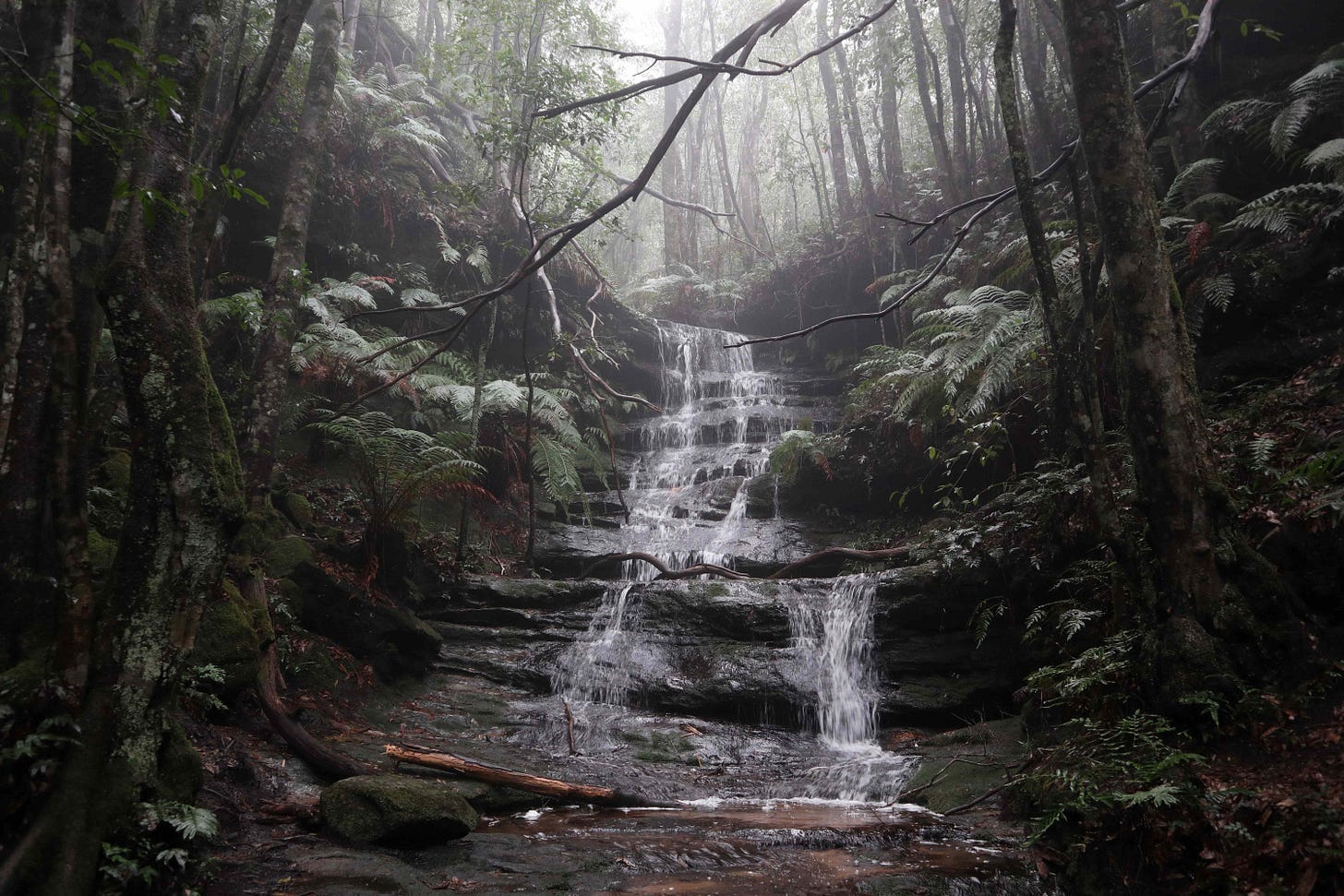Cold water
For the first and probably last time, my newsletter features me in a swimsuit (7 minute read)
As a child, I was lucky enough to have a week or two on holiday by the beach every year. I still remember the crescent-shaped beach, which seemed vast, although it was probably only half a kilometre long. I remember climbing the many pohutukawa trees which grew in the grounds of the motel. I remember the bunk-beds with orange candlewick bedspreads. I remember running across the hot sand in bare feet and into the cool water. Once I was knee-deep, the water didn’t seem quite so appealing. I would walk slowly into deeper water, adjusting to the temperature on my thighs before I let it touch my hips and my waist. Then, finally, I would submerge myself, shocked at the temperature.
I might have been the last to get under the water, but my endurance was unequalled. I never seemed to get cold. After a while in the water, my brother would start shivering and turning faintly blue, but not me. I was just fine.
I don’t enjoy cold weather, but my tolerance of cold water has remained. When I was living in Christchurch, I discovered the joys of lake and river swimming on a couple of visits to the South Island’s West Coast. (This was the 1990s. I hope those lakes and rivers are still clean enough to swim in now). When I lived in Nelson, I had many more river-swimming opportunities. I would often swim after work in the Maitai River, which runs through the middle of Nelson. Further afield, there were many wonderful swimming holes. Perhaps my favourite was the Roding River in the Aniseed Valley. The water came from the mountains of the Mt Richmond Forest Park, and at the swimming hole it was deep, clear and a beautiful blue-green.
On occasion, I’ve even swum in alpine lakes and streams. On my trip to Lake Angelus in the Nelson Lakes National Park, where there was still some snow on the ground even though it was December, I took a dip in the lake. It wasn’t warm, but I don’t remember being particularly cold.
So I didn’t think twice when I was organising a day trip in the Blue Mountains and my guide, Stephanie, asked if I wanted to swim.
The problem with booking any kind of trip in the outdoors is that you have to take the weather you get. The day I arrived in Katoomba there was heavy rain, but the weather did improve and later it was almost sunny. But the next day was another story. The whole town was blanketed in heavy cloud, all day. It did stop raining sometimes, but then it would start again. And it was freezing cold.
I’d told my guide that I didn’t really mind where I went as long as I saw interesting plants. But I don’t think that there is a walk in the Blue Mountains which doesn’t have interesting plants. She took me to a town just west of Katoomba called Wentworth Falls, which is known for its waterfalls. On a clear day, they must be stunning. But the rain and mist brought a different kind of magic to the falls, a raw power which reminded me that we can never control water completely.
(If you are reading this as an email - click on the image below and it will take you to the online version to see the video)
The route we walk to see these waterfalls is more staircase than track. Many of the steps are carved directly into the rock, and I look at them with trepidation. New Zealand’s predominant rock, greywacke, can be treacherous when wet. But the sandstone of the Blue Mountains is gritty and rough, even as the water pours over it.





